Fedezd fel Titkos Velencét: Rejtett helyek a városban
- San Zaccaria-kriptája: utazás a velencei földalattiba
- Scala del Bovolo: a Contarini-palota rejtett építészeti csodája
- A velencei zsidó gettó: történelem és kultúrae
- Rejtett szigetek: San Lazzaro degli Armeni és San Michele-sziget
- Libreria Acqua Alta
- Ferde harangtornyok és titkos templomok
- Velencei különlegességek: hiányzó házszámok és utcanevek
- A „Boszorkány ébresztőórája”
- A Lumière fivérek Velencében
A világ szemében a csatornák, a gondolák és a hidak jellemzik leginkább Velence városát. Sokan azonban nem tudják, hogy vannak rejtett zugok, amelyek váratlan kincseket és lenyűgöző történeteket rejtenek, és amelyek a lagúna városának kevésbé ismert, de ugyanolyan varázslatos oldalát mutatják meg.
A leghíresebb látnivalók mellett ugyanis létezik egy szokatlan és titkos Velence is, amely csak arra vár, hogy felfedezzék.
San Zaccaria kriptája: utazás a velencei földalattiba
A fenséges San Zaccaria-templom alatt rejtőző, azonos nevű kripta – amelyet gyakran eláraszt a magas víz – évszázadok történelmét és művészetét őrzi, és egyedülálló, kissé szokatlan élményt kínál a velencei föld alatt.
A 9. században épült San Zaccaria kripta valójában a román stílusú építészet ritka példája Velencében, görög márványoszlopokkal alátámasztott keresztboltozatával, amely szinte misztikus hangulatot teremt.
Itt nyugszanak nyolc velencei dózse maradványai, amelyek tanúskodnak e hely történelmi jelentőségéről, és a falakat díszítő ősi freskók, bár az idő és a páratartalom megrongálta őket, bibliai történeteket és San Zaccaria életét mesélik el. Ezenkívül a keskeny ablakokon beszűrődő lágy fény árnyékjátékot és tükröződéseket hoz létre a vízben, amely időnként elárasztja a padlót, és szürreális látványt nyújt a látogatóknak.
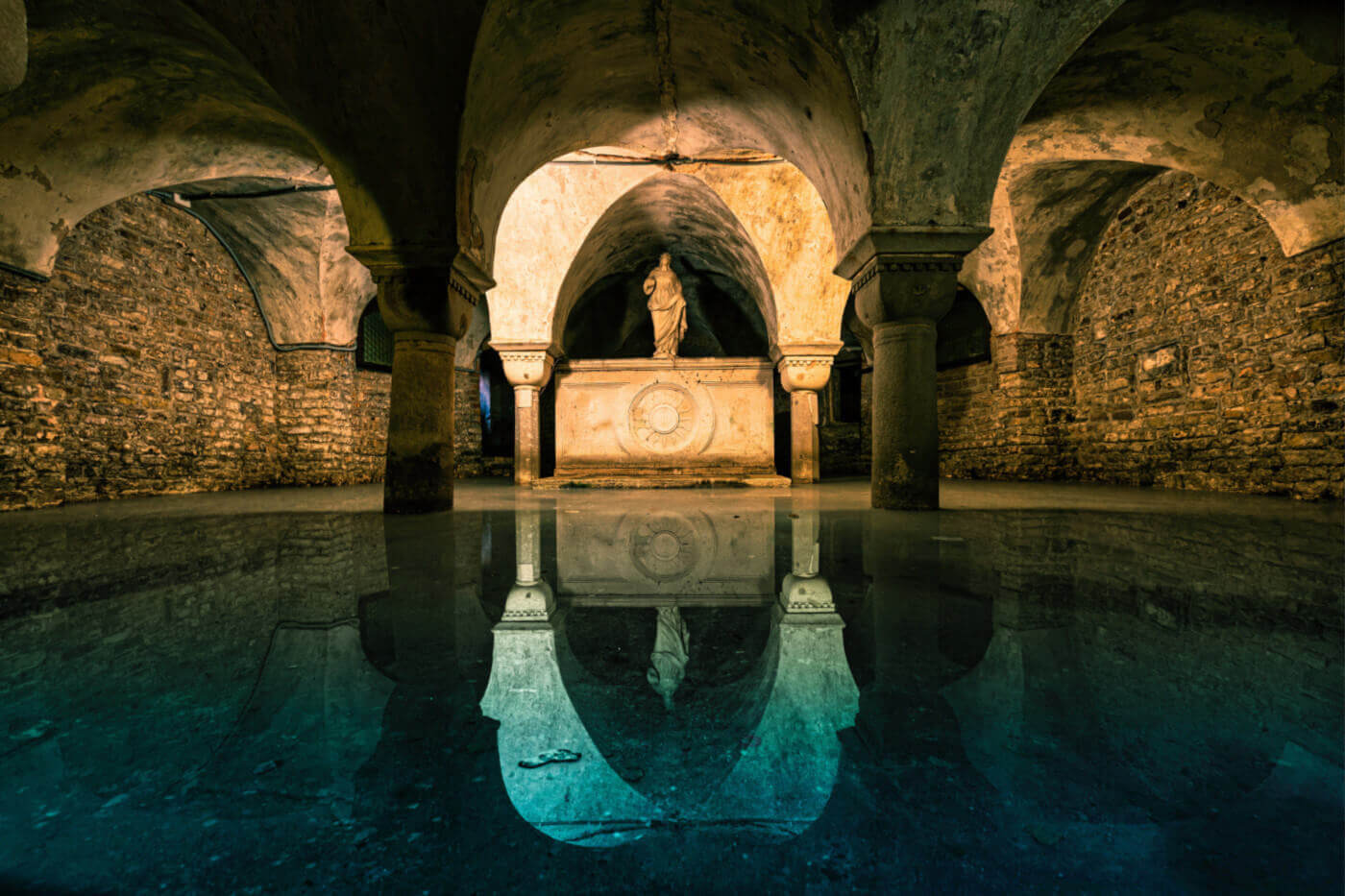
Scala del Bovolo: a Contarini-palota rejtett építészeti csodája
A Scala del Bovolo egy építészeti ékszer, amely Velence szívében rejtőzik, a velencei reneszánsz remekműve, amely még ma is meglepetést okoz egyediségével és szépségével. A Palazzo Contarini részét képező külső csigalépcső nevét a velencei dialektusból származó „bovolo” szóból kapta, amely „csiga” jelent, pontosan spirális alakja miatt.
A lépcsőház a 15. század végén Pietro Contarini megbízásából épült, és a gótikus, reneszánsz és velencei-bizánci stílusok ötvözésének rendkívüli példája. 28 méter magas, 80 lépcsőfokkal, amelyek egy hengeres torony körül kanyarodnak, szerkezete egymást átfedő ívek sorozatából áll, amelyek nagy hatású vizuális hatást keltenek, mintha egy kőből készült szalag tekeredne az ég felé.
De ami a Scala del Bovolo-t igazán különlegessé teszi, az a kis udvarban elrejtett elhelyezkedése, távol a fő turisztikai útvonalaktól, ami meglepetésként hat azokra, akik felfedezik. Ráadásul a tetejéről lélegzetelállító panorámás kilátás nyílik Velence háztetőire és harangtornyaira, ami egy kevésbé ismert perspektívát kínál a városra.
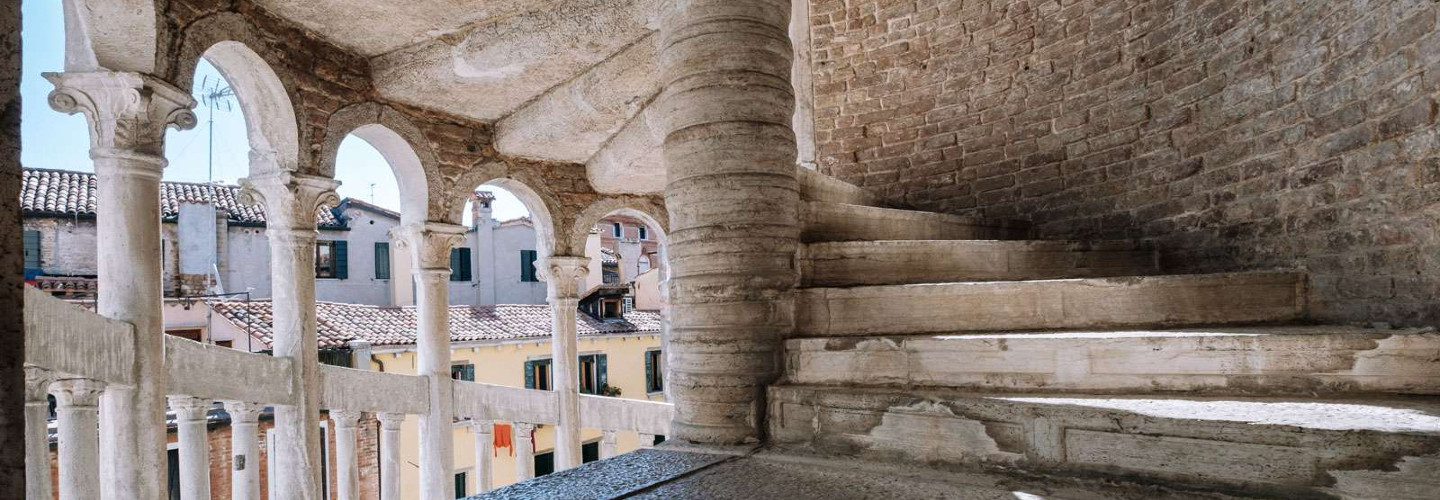
A velencei zsidó gettó: történelem és kultúra
Established in 1516, the Jewish Ghetto of Venice is the oldest in the world and represents a fundamental chapter in the history of the lagoon city. This neighbourhood, in fact, located in the Cannaregio district, is a labyrinth of narrow streets and hidden fields that encompasses centuries of history, culture and resilience of the Venetian Jewish community.
And to think that the term „ghetto” derives from here! The area, in fact, once home to foundries („geti” in Venetian), became the designated place for the forced residence of Jews. Fortunately, despite the restrictions, the Jewish community flourished, creating a rich culture that is still reflected in the neighbourhood’s architecture and traditions today.
Walking through the Ghetto, you can then admire the five historic synagogues, hidden inside apparently ordinary buildings, each representative of a different Jewish tradition, German, Italian, Spanish, Levantine and Sephardic respectively.
Another notable feature of the Ghetto is the unusually tall palaces. Due to space restrictions, the buildings were in fact built upwards, creating what some historians call the first „skyscraper” in Europe.
Today, the Ghetto is a vibrant neighbourhood that is home to kosher shops, traditional restaurants, the Jewish Museum, and the moving Holocaust Memorial. It is a place of memory but also of daily life, where the Jewish community continues to thrive and contribute to the rich cultural mosaic of Venice.
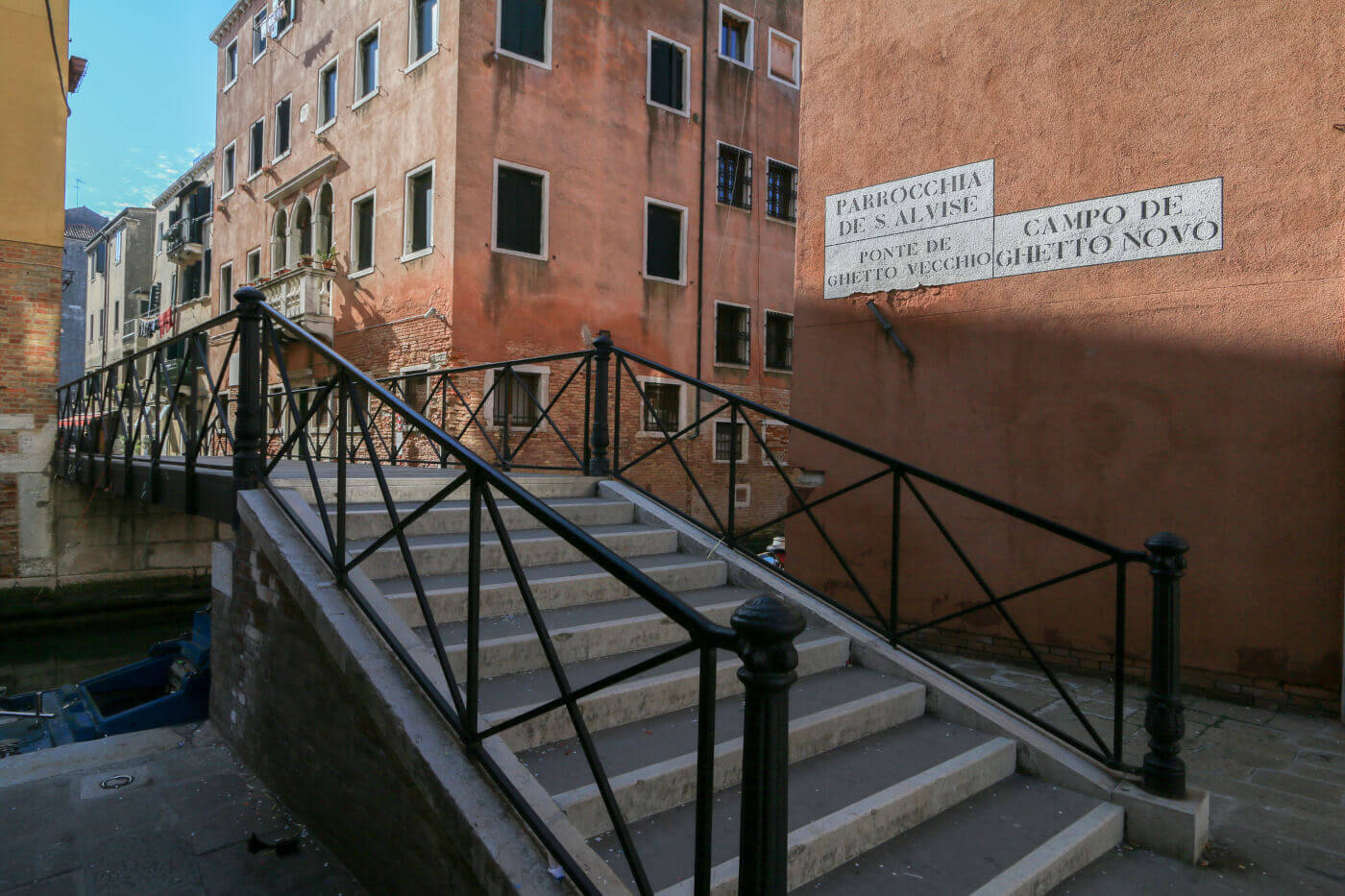
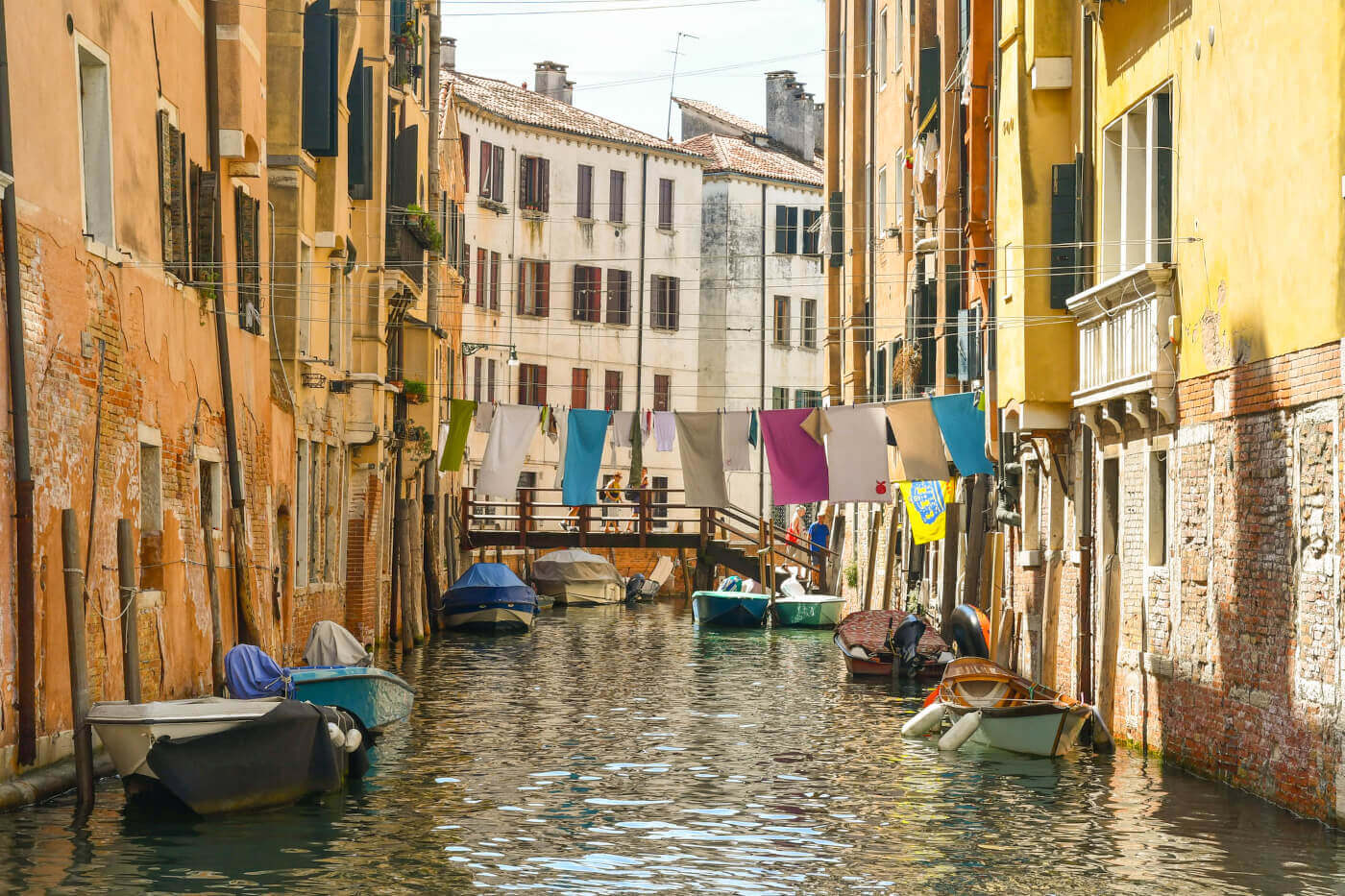
Hidden Islands: San Lazzaro degli Armeni and San Michele Island
Away from the hustle and bustle of Venice, the islands of San Lazzaro degli Armeni and San Michele offer different experiences than usual, each with its own curious and fascinating history.
The island of San Lazzaro degli Armeni, just 3 hectares large, is a real cultural jewel; since 1717 it has been home to an Armenian monastery, founded by the monk Mechitar, and houses one of the most important libraries of Armenian manuscripts in the world, with over 170,000 volumes in the language. The monastery is also known for its museum, which displays an extensive collection of Armenian art, including an Egyptian mummy from the seventh century BC.
The beauty of the island and its cultural richness have attracted numerous illustrious visitors over the centuries, including Lord Byron, who stayed there for a few months to study Armenian.
Today, monks continue to preserve Armenian culture, even producing handicrafts such as the famous Vartanush, a rose liqueur.
The Island of San Michele, for its part, is the monumental cemetery of Venice. Created in the nineteenth century to solve the problem of burial in the Serenissima, the island has become over the years a place of deep peace and reflection. The cemetery, in fact, with its Renaissance church of San Michele in Isola, is a real open-air museum, full of sculptures and funerary monuments of great artistic value.
Numerous illustrious personalities also rest here, including the composer Igor Stravinsky, the poet Ezra Pound, and the Venetian painter Emilio Vedova.
Acqua Alta Bookshop
Another hidden treasure in the city centre is certainly the Acqua Alta Bookshop in Venice, a place that enchants reading lovers from all over the world. Known as „the most beautiful bookshop in the world„, this unique space creatively adapts to the challenges posed by Venice’s high water.
Inside, new and used books find their place in unusual places such as bathtubs, gondolas and even in an old rowboat, all to protect the volumes from frequent flooding. This ingenious solution, in addition to saving hundreds of books, has certainly also helped to create a surreal and fascinating atmosphere, much appreciated by visitors who can thus get lost among piles of books that reach the ceiling, explore hidden corners full of volumes in different languages and enjoy the view of the canals from the windows of the bookstore.
Leaning bell towers and secret churches
As is now evident, Venice hides architectural curiosities that surprise even the most attentive visitors.
Among these, the four leaning bell towers of the city certainly stand out:
- San Pietro di Castello, built in 1463, is the least inclined of the four and stands out for its Istrian stone cladding.
- San Giorgio dei Greci, built between 1587 and 1592, is associated with the Greek Orthodox cathedral and offers a unique view of the Venetian landscape.
- Santo Stefano, with an inclination of at least two meters, is one of the tallest and most evocative bell towers in the city.
- San Martino in Burano, 53 meters high and with an inclination of 1.83 meters, is located on the island of Burano and has undergone numerous restorations over the centuries.
These bell towers, tilted due to the subsidence of the ground during their construction, offer an unusual perspective of the Venetian skyline and are silent witnesses to the history and architectural challenges of the lagoon city.
In addition to the bell towers, however, Venice is also dotted with small hidden churches, each with its own history and architectural beauty. These churches, often overlooked by the most popular tourist routes, offer a unique opportunity to discover Venetian sacred art in an atmosphere of tranquillity and meditation, still experienced authentically by the inhabitants of the lagoon today.
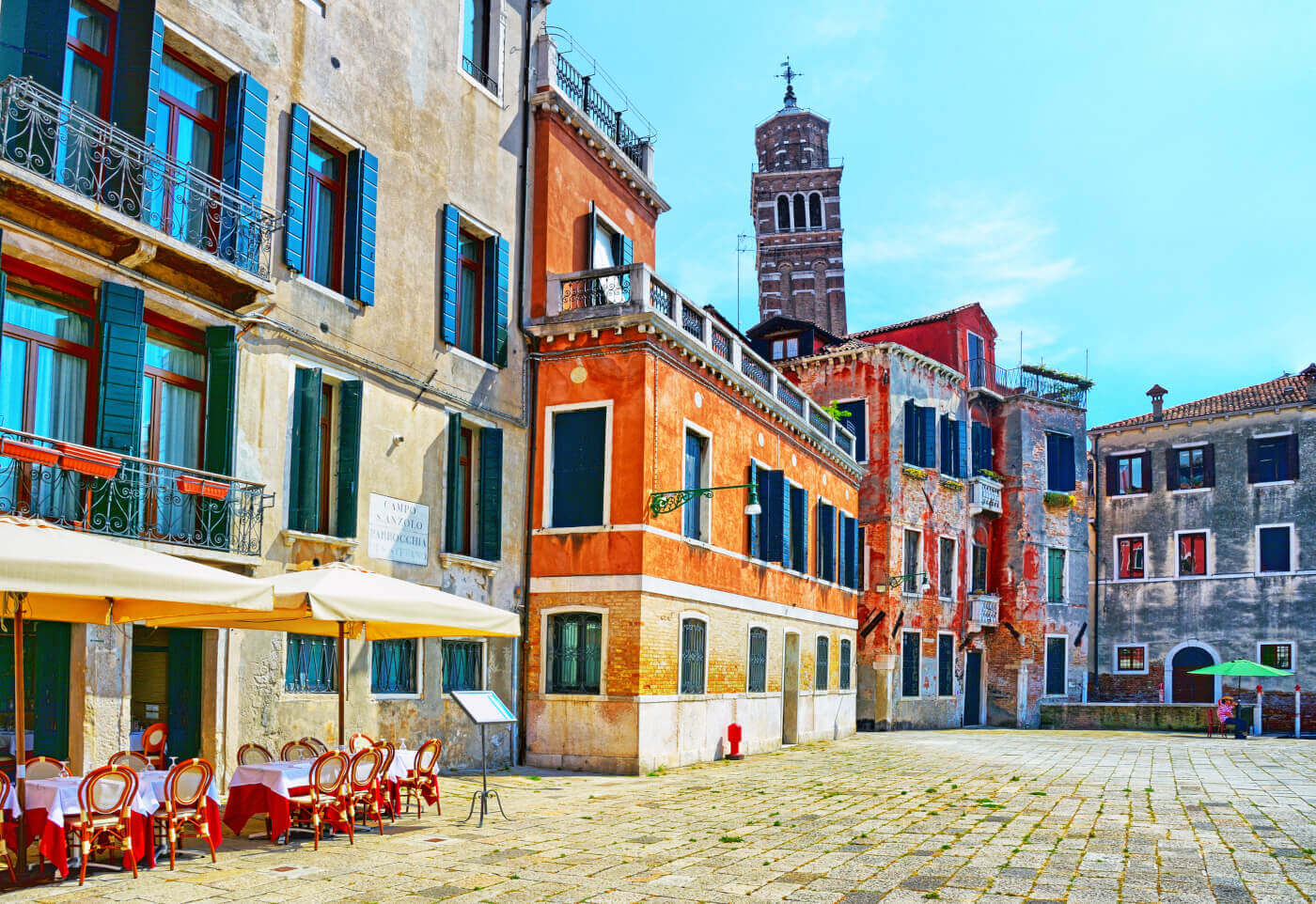
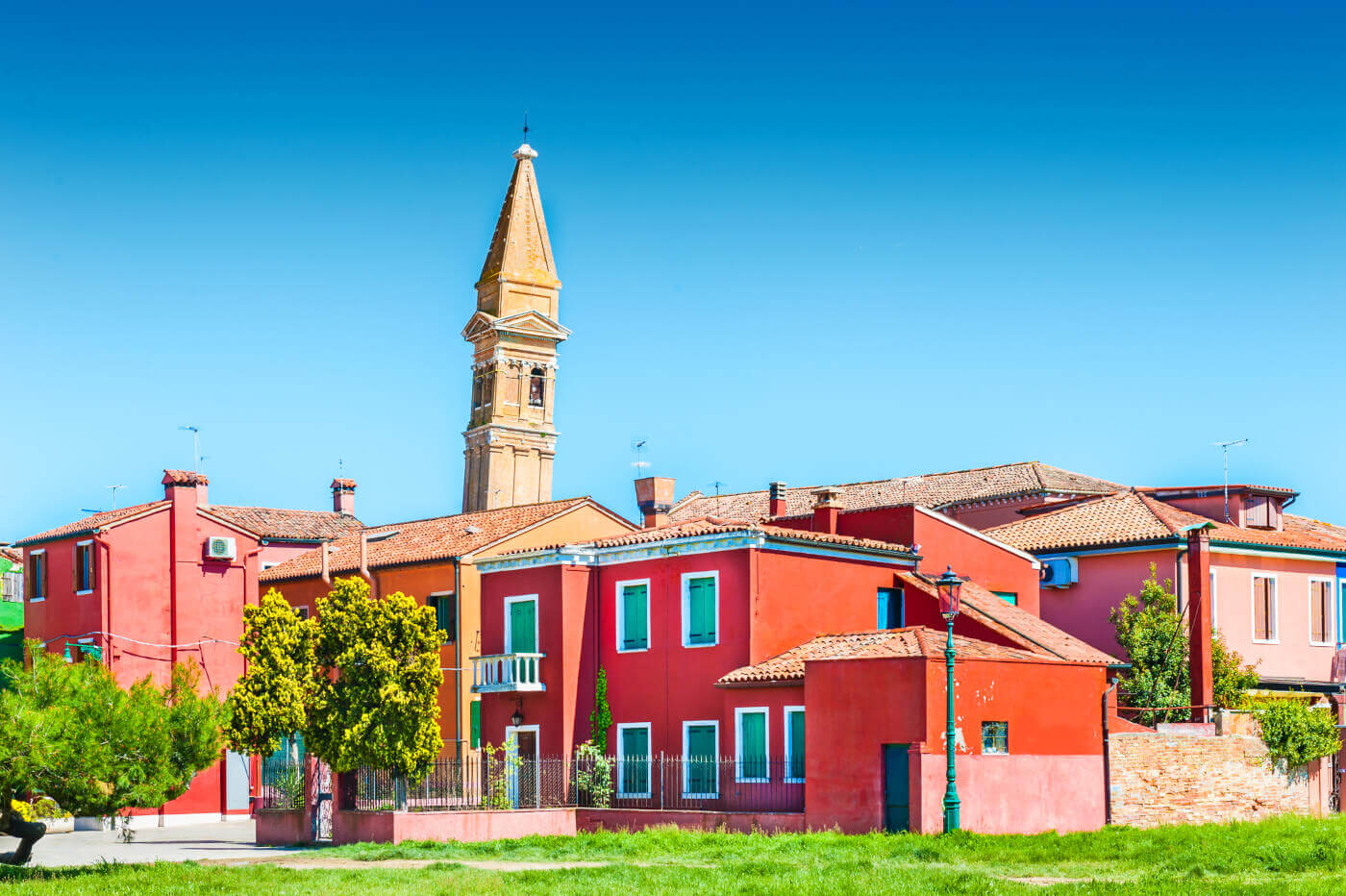
Venetian curiosities: missing house numbers and street signs
Venice is a city that never ceases to surprise, even in the smallest details of its urban planning. A curious example is represented by the missing house numbers in St. Mark’s Square, where you suddenly go from number 21 to 40.
This leap in numbering has an interesting history: in 1902, before the collapse of St. Mark’s bell tower, 18 wooden shops located at the foot of the tower were demolished to facilitate structural checks. When the bell tower was rebuilt, however, these shops were not restored, thus leaving a „void” in the house numbering that persists to this day.
Another characteristic element of the Venetian urban landscape are the „nizioleti„, or the typical street signs of the city. Painted in black on a white background, these signs not only indicate the names of streets and places, but also tell stories and anecdotes related to Venetian toponymy. From the name of an ancient craft practiced in that area, to a significant historical event, to local legends and curiosities, the nizioleti are much loved by Venetians for their deep connection with the traditions of the city.
The „Witch’s Alarm Clock”
Among the most fascinating legends of Venice, that of the „Witch’s Alarm Clock” in Calle della Toletta certainly deserves a special mention.
According to tradition, a witch who was much feared by the inhabitants of the neighbourhood lived in this street; it was said that she possessed magical powers and used a special clock to perform her spells. Legend has it, however, that one day, the inhabitants of the neighbourhood, infuriated by her misdeeds, decided to confront her. The witch, feeling thus threatened, cast one last spell on the clock before disappearing forever, and from that moment, the alarm clock remained embedded in the wall of the calle. It is still said that its hands move in a mysterious way, as if guided by a supernatural force.
This ancient clock, visible walking along Calle della Toletta, has become a point of interest for visitors and locals, a symbol of Venetian folklore that invites you to reflect on the thin line between reality and fantasy that characterizes the lagoon city.
The Lumière Brothers in Venice
The link between Venice and cinema has deep roots, dating back to the dawn of the seventh art.
In 1896, the Lumière brothers, known as the pioneers of world cinematography, shot the first moving film of the Grand Canal. This short film, which captured the daily life and unique atmosphere of the lagoon city, marked the beginning of a lasting love between Venice and cinema.
To this day, Venice keeps this tradition alive through its famous Film Festival, the oldest in the world, and thanks to multiplexes such as the Giorgione and the Rossini, which have continued to offer quality programming for generations.
But that’s not all: Venice, with its unique light and breathtaking scenery, continues to be a source of inspiration for filmmakers and artists from all over the world. The city itself is often transformed into a natural film set, thus perpetuating his love affair with cinema that began more than a century ago with the Lumière brothers.
Discovering these hidden places and stories offers a deeper and more authentic experience of Venice, which will allow you to connect with the true soul of the city.

